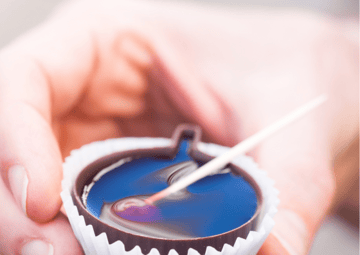Ginja
/ in Food Tours, Portugal food and wine tours, Portugal tours, Things to do in lisbon, Ginja / by smadar PalaceGinja, the legendary liqueur of Lisbon, is a favorite of visitors and residents alike. It’s a delicious quaff steeped in Portuguese culture. Beyond the rich, sweet flavor and gorgeous ruby color there’s a history which gives you even more reason to enjoy the iconic liqueur of Portugal. Let’s dive into the reason Ginja is a much-loved and delicious indulgence.
Life’s A Bowl of Cherries
Ginjinha is the actual name of the Portuguese potable however it’s been shortened to Ginja. The name Ginja refers to the Ginja berries which are actually sour cherries. The cherries are a major ingredient in the liqueur. Making Ginja involves taking the Portuguese brandy, aguardiente, or a fortified Portuguese wine, and infusing it with the tart berries. A sweetener is added along with, typically, cinnamon or cloves. The Ginja is then left for several months, sometimes longer, to infuse the flavors.
The result is a luscious fruity, sweet and somewhat exotic liqueur. Ginja is quite heavy with an alcohol content of 18% to 24%.
It All Began with A Friar
So how did this bodacious brew come to be? You could thank the Romans for first introducing the Ginja tree to Portugal, but it was really a friar who resided at Lisbon’s Igreja de Santo António who added the sour cherries to the brandy along with sugar and cinnamon. This is the same recipe used today, with the exception of the cinnamon sometimes being replaced by cloves.
The first bar to offer Ginja to its patrons was a bar in Lisbon owned by Francisco Espinheira. The drink quickly caught on as a local favorite and even as a type of medicine. Ginja quickly became a symbol of Lisbon, then the surrounding area and now the entire country of Portugal.
Where to Get Your Ginja
This locally celebrated beverage is a favorite and often enjoyed in a Ginja bar, traditional establishments throughout Lisbon. Other Portuguese towns known for their production of this exquisite elixir are Alcobaça, Óbidos, Marvao and Colviha. There is even a protected designation of origin for Ginja from the stunningly beautiful town of Serra de Estrella, about 200 miles northeast of Lisbon.
Portugal’s iconic liqueur tastes like cherries. It’s both sweet and strong. Served both as an aperitif and a digestif you quickly realize there is no wrong time to sip a glass of Ginja.
How The Portuguese Enjoy Their Ginja
Visitors and locals sip their Ginja from a glass that resembles a shot glass. At the bottom of the receptacle, traditionally, you will find a cherry-you’re delicious reward for finishing your drink. As if you need any more motivation!
Some people prefer their Ginja sans cherry-at-the-bottom. Your server will ask if you would like a cherry in your drink or not. Be advised these tart little cherries have pits.
Don’t be surprised when you’re served your Ginja if the bartender issues a stern directive that “Ginja is not a shot”. Although your drink is served in a type of shot glass, please don’t drink it like one. The Portuguese are very adamant that to fully experience this quintessential quaff you really need to sip it slowly and let the luscious cherry notes wash over your palate with flavor. In fact they are so adamant they even sell tee shirts with the directive “Ginja is Not a Shot!” emblazoned on the front.
A recent alternative to the shot glass is a cup made of dark chocolate. Although this may not be the traditional way to serve a Ginja it certainly is a delicious one. The chocolate complements the cherry flavor and elevates your experience as only chocolate can.
Share this article
-
Share on Facebook
Share on Facebook
-
Share on Twitter
Share on Twitter
-
Share on WhatsApp
Share on WhatsApp
-
Share on Pinterest
Share on Pinterest
-
Share on LinkedIn
Share on LinkedIn
-
Share on Tumblr
Share on Tumblr
-
Share on Vk
Share on Vk
-
Share on Reddit
Share on Reddit
-
Share by Mail
Share by Mail



